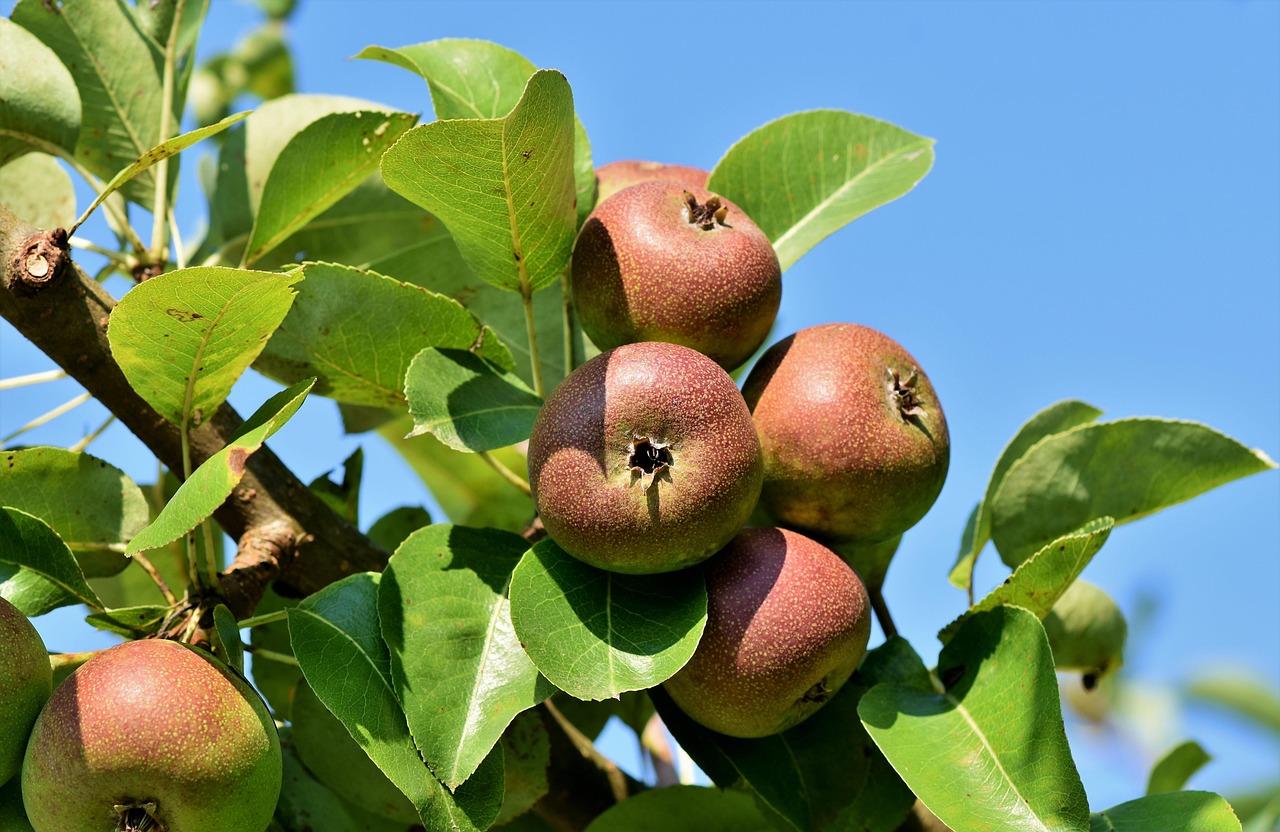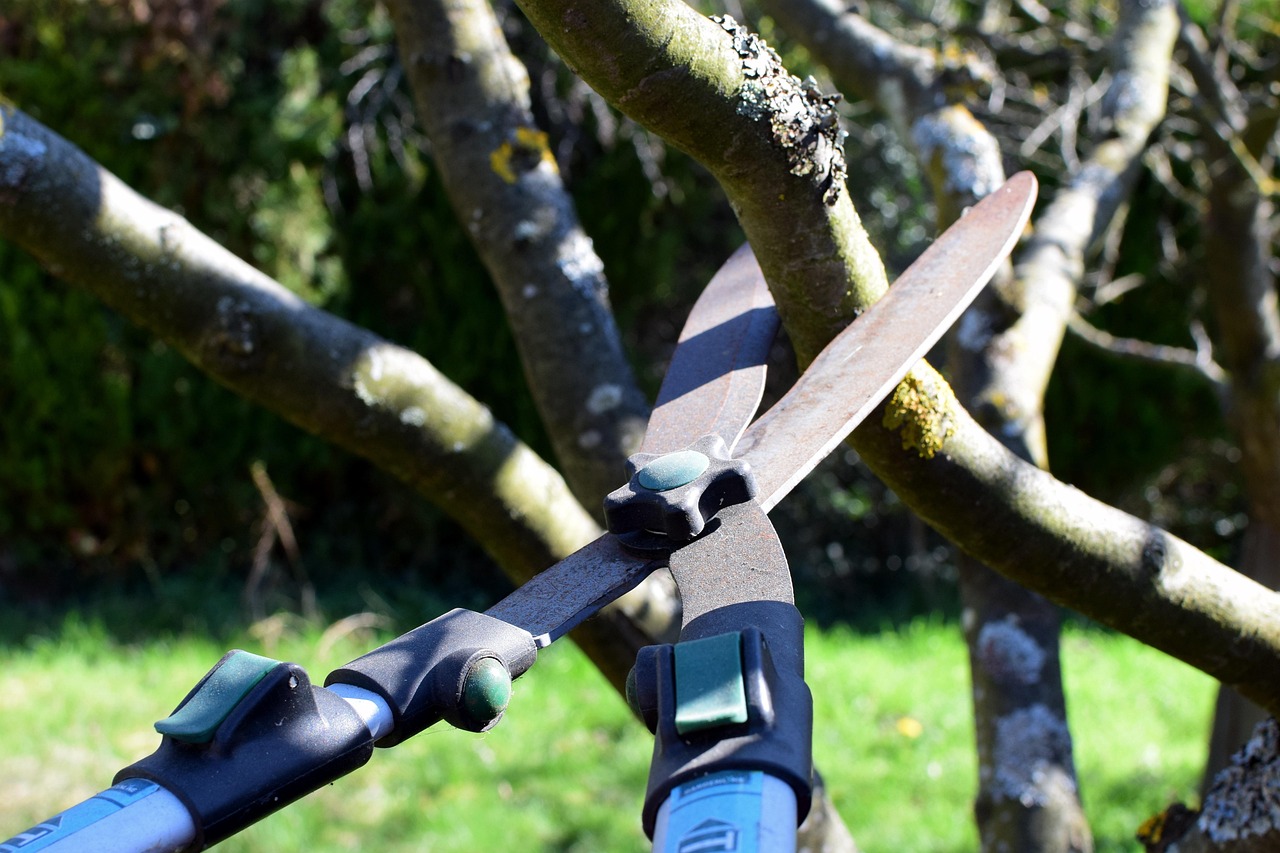Pruning apple trees is essential for optimal fruit production. Proper pruning techniques improve tree health, enhance fruit quality, and increase yields. Timing and method are crucial for achieving the best results.
Apple trees are a popular choice for home gardens. They provide delightful fruits and beautiful blossoms in spring. However, to ensure healthy growth and abundant harvests, proper care is crucial. One of the most important aspects of apple tree maintenance is pruning. This process involves selectively removing branches to shape the tree, promote air circulation, and allow sunlight to reach the fruit.

In addition to enhancing fruit production, pruning helps prevent diseases and pests by improving airflow within the tree’s canopy. This reduces humidity and minimizes the risk of fungal infections. Moreover, well-pruned trees are easier to manage and harvest. Understanding the right techniques can make a significant difference in your apple tree’s health and productivity.
Understanding Apple Tree Anatomy
Before diving into pruning techniques, it’s essential to understand the basic anatomy of an apple tree. Familiarity with the different parts of the tree will help you make informed decisions during pruning.
| Tree Part | Description |
|---|---|
| Branches | These are the main limbs that support leaves and fruit. |
| Twigs | Smaller offshoots from branches where buds form. |
| Buds | These can be flower buds or leaf buds, crucial for new growth. |
| Crown | The upper part of the tree where branches meet. |
| Roots | Anchor the tree and absorb water and nutrients from the soil. |
Each part of the tree plays a vital role in its overall health and productivity. When pruning, it is important to consider which branches and buds to remove to enhance growth without damaging the tree.

When to Prune Apple Trees
The timing of pruning is crucial for successful apple tree maintenance. Generally, the best time to prune apple trees is during their dormant season, which occurs in late winter or early spring before new growth begins. Pruning at this time minimizes stress on the tree and encourages healthy growth in the upcoming season.
There are two main pruning windows:
- Late Winter Pruning: This is typically done from January to March. The tree is still dormant, making it a good time for major cuts without stressing the tree.
- Summer Pruning: This occurs in June or July. It involves light pruning to control growth and remove unwanted shoots. Summer pruning can also help increase sunlight exposure to developing fruits.
Types of Pruning Techniques
There are several pruning techniques that can be applied to apple trees. Each technique serves a specific purpose and can greatly affect how the tree grows and produces fruit.

- Thinning: This technique involves removing entire branches or shoots to increase airflow and light penetration in the canopy. Thinning helps prevent overcrowding and encourages better fruit development.
- Heading: This method shortens branches by cutting them back to a bud. This encourages bushier growth and can lead to more fruiting spurs.
- Renewal Pruning: Used on older trees, this technique involves cutting back older branches to promote new growth. This can rejuvenate an older apple tree and enhance its productivity.
Understanding these techniques will help you choose the best approach based on your apple tree’s age, health, and desired shape. Proper application of these methods leads to a healthier tree and more abundant fruit production.
Tools for Pruning Apple Trees
Having the right tools is essential for effective pruning. Using sharp, clean tools ensures smooth cuts that heal quickly, reducing the risk of disease. Here are some common tools used for pruning apple trees:
- Bypass Pruners: Ideal for cutting small branches and twigs with precision.
- Loppers: Great for thicker branches that are too large for pruners.
- Saw: A pruning saw is useful for cutting larger limbs that require more force.
- Gloves: Protect your hands while working with branches and tools.
Using these tools properly will make the pruning process efficient and effective, leading to better results for your apple trees.

Pruning Techniques for Different Apple Tree Ages
Different ages of apple trees require varied pruning techniques. Understanding how to adapt your approach based on the tree’s maturity will enhance its health and fruit production.
Young Apple Trees
Young apple trees, typically those that are less than five years old, benefit from formative pruning. This establishes a strong structure for future growth. The primary goal is to create a central leader system that promotes vertical growth.
- Remove competing leaders: If multiple stems are competing for dominance, select the strongest one and remove the others.
- Encourage lateral branching: Cut back main branches to encourage the development of lateral branches. This will create a well-balanced canopy.
- Thin out crowded branches: Remove any inward-growing branches to enhance air circulation and light penetration.
Mature Apple Trees
Mature apple trees, usually over five years old, require different techniques to maintain their health and productivity. The focus should shift to maintenance pruning, which aims to rejuvenate the tree and enhance fruit quality.
- Remove dead or diseased wood: Inspect the tree for any signs of disease or decay and cut out affected areas.
- Thin out old fruiting wood: Remove older branches that no longer produce fruit effectively. This encourages new growth.
- Maintain an open canopy: Ensure sufficient space between branches to allow sunlight and air to circulate freely.
Old Apple Trees
Old apple trees often require more intensive care. These trees may have become overgrown or unmanageable over time. Renewal pruning is essential for revitalizing these trees.
- Assess the tree: Identify which branches are still healthy and productive. Mark these for retention.
- Remove unproductive branches: Cut back older or weak branches to encourage new growth from the base.
- Gradual rejuvenation: Avoid heavy pruning in one season. Instead, gradually remove older branches over several years to prevent shock.
Understanding Growth Patterns
An essential aspect of successful pruning is understanding the growth patterns of apple trees. Recognizing how and when trees grow will help you make informed decisions about when and how much to prune.
| Growth Phase | Description | Pruning Approach |
|---|---|---|
| Dormant Phase | The tree is not actively growing, usually in late winter to early spring. | Major pruning cuts can be made to shape the tree. |
| Spring Growth | Buds begin to open, and new growth appears. | Avoid heavy pruning. Light thinning can be done if necessary. |
| Summer Growth | The tree grows vigorously, producing new leaves and fruit. | Summer pruning can help control growth and improve sunlight exposure. |
| Fall | The tree prepares for dormancy, and fruits begin to ripen. | Avoid any significant pruning during this period to reduce stress. |
This table summarizes the growth phases of apple trees and suggests appropriate pruning approaches for each phase. Adapting your techniques according to these phases will lead to better outcomes in fruit production.
Common Mistakes to Avoid When Pruning
While pruning is beneficial, it is easy to make mistakes that can harm the tree. Being aware of common errors can help you avoid them and ensure healthy growth.
- Over-pruning: Removing too many branches can stress the tree and reduce fruit yield. Always prune judiciously.
- Poor timing: Pruning at the wrong time can damage the tree. Avoid pruning during the active growing season.
- Using dull tools: Dull tools can create jagged cuts that do not heal well, increasing the risk of disease.
- Ignoring tree shape: Failing to maintain a balanced shape can lead to poor light exposure. Aim for a well-structured canopy.
Avoiding these common mistakes will help you maintain healthy apple trees that produce abundant fruit. Proper care and attention to detail during the pruning process are key to achieving optimal results.
Techniques for Specific Apple Varieties
Different apple varieties have unique growth habits and requirements. Understanding how to tailor your pruning techniques to specific varieties can enhance their productivity and fruit quality. Below are some popular apple varieties and recommended pruning strategies for each.
Standard Apple Trees
Standard apple trees grow tall and wide, making them an ideal choice for larger gardens. These trees typically require annual pruning to maintain their shape and health.
- Encourage strong central leaders: Focus on maintaining a single central leader to promote height and stability.
- Thinning cuts: Regularly thin out crowded branches to allow sunlight to penetrate the canopy.
- Fruit spurs: Leave older fruit spurs on productive branches while removing non-productive wood.
Dwarf Apple Trees
Dwarf apple trees are compact and suited for small spaces. Their pruning needs differ from those of standard trees, focusing more on maintaining their size.
- Maintain shape: Regularly cut back new growth to maintain a balanced shape and prevent overgrowth.
- Shortening branches: Cut back branches to encourage bushier growth, which can lead to more fruiting spurs.
- Focus on fruiting wood: Prioritize the maintenance of healthy, productive branches while removing weak or crowded ones.
Columnar Apple Trees
Columnar apple trees have a narrow growth habit, making them ideal for tight spaces. Pruning these trees should focus on maintaining their vertical form.
- Limit lateral growth: Regularly cut back any lateral shoots that detract from the columnar shape.
- Encourage vertical growth: Focus on promoting upward growth by selectively pruning lower branches.
- Fruiting efficiency: Since columnar apples can produce fruit on short spurs, prioritize the health of these spurs during pruning.
The Importance of Tree Health Monitoring
Monitoring the health of your apple trees is crucial for successful pruning and overall care. Regular inspections can help you identify issues early and adjust your pruning strategies accordingly.
Signs of Stress or Disease
The following signs may indicate that your apple tree is stressed or diseased:
- Wilting leaves: This may indicate insufficient water or root problems.
- Discolored foliage: Yellowing or browning leaves can signal nutrient deficiencies or disease.
- Cankers or lesions: These physical signs on the bark often indicate fungal infections that may require immediate attention.
- Pest infestations: Look for signs of insects or their damage on leaves and fruit.
Regular Health Checks
Conducting regular health checks helps ensure your apple trees remain vigorous. Here are some tips for effective monitoring:
- Inspect foliage: Check leaves for discoloration, spots, or signs of pests during the growing season.
- Examine bark: Look for cracks, peeling, or abnormal growths that could indicate disease.
- Check branches: Assess branch structure for any dead or weak limbs that may need pruning.
Pest and Disease Management in Pruning
Pests and diseases can significantly affect the health of apple trees. Proper management during the pruning process is essential to minimize risks and promote a healthy tree environment.
Common Pests Affecting Apple Trees
Several pests can threaten apple trees, including:
- Aphids: These small insects suck sap from leaves, causing wilting and stunted growth.
- Codling moths: Larvae feed on developing fruit, leading to early fruit drop and damage.
- Spider mites: These tiny pests create webs and cause leaf discoloration and drop.
Disease Prevention Strategies
Implementing preventive measures helps protect your apple trees from diseases. Consider the following strategies:
- Cultural practices: Maintain good soil health, water adequately, and provide proper spacing between trees to improve airflow.
- Cleansing tools: Always clean pruning tools with disinfectant between cuts to prevent disease spread.
- Disease-resistant varieties: Consider planting disease-resistant apple varieties if you have had repeated issues in the past.
Taking proactive steps in pest and disease management during the pruning process will help you maintain healthy apple trees, ultimately enhancing fruit production.
Pruning for Maximum Yield and Quality
To achieve the best possible yield and fruit quality from your apple trees, it is crucial to implement a comprehensive pruning strategy that considers the specific needs of each tree. Consistent monitoring, proper timing, and the right techniques can significantly affect the overall health and productivity of your trees.
As you prune, be mindful of the following factors that can enhance both yield and quality:
- Selective Branch Removal: Focus on removing branches that are weak, crossing, or growing inward. This allows remaining branches to receive adequate sunlight and airflow.
- Fruiting Spur Maintenance: Prioritize maintaining healthy fruiting spurs, as these are responsible for producing apples. Remove older spurs that are less productive while ensuring younger ones thrive.
- Regular Assessment: Conduct annual assessments of your trees’ growth and health. Make adjustments to your pruning strategy based on these evaluations to optimize fruit production.
Seasonal Considerations for Pruning
Understanding how to adapt your pruning practices based on seasonal changes is essential for maximizing fruit production. Different seasons bring distinct challenges and opportunities.
Spring Pruning
Spring is a critical time for apple tree care. While major pruning should be done in winter, light pruning can take place in early spring. The following practices are recommended:
- Remove any dead or damaged wood: Inspect the tree for any branches that did not survive the winter, as these can harbor pests or diseases.
- Thin fruit clusters: As blossoms appear, thin out clusters to ensure that remaining fruits have enough resources to grow and ripen properly.
- Avoid heavy cuts: Resist the temptation to make major cuts during this time, as the tree is beginning its growth cycle.
Summer Pruning
Summer pruning focuses on managing growth and enhancing fruit quality. This is often done after the first flush of growth has occurred.
- Control excess growth: Trim back vigorous shoots to maintain size and shape. This also helps in redirecting energy towards fruit production.
- Enhance sunlight exposure: Prune to create openings in the canopy, allowing sunlight to reach all parts of the tree.
- Avoid stress: Be cautious with summer pruning. Excessive cutting can stress the tree during its active growth phase.
Understanding Your Soil and Environment
The soil and environmental conditions play a significant role in the health of your apple trees. Healthy soil promotes strong root systems, which are essential for nutrient uptake and overall tree vigor.
Soil Testing and Amendments
Regular soil testing can help you understand the nutrient composition and pH levels of your soil. Based on the results, you can make necessary amendments to optimize conditions for your apple trees.
- Nutrient Balance: Ensure that your soil has an adequate balance of nitrogen, phosphorus, potassium, and micronutrients vital for tree growth.
- Organic Matter Addition: Incorporate organic matter such as compost or well-rotted manure to improve soil structure and fertility.
- pH Adjustment: Most apple trees prefer slightly acidic soils (pH 6.0-6.8). Adjust pH levels as needed using lime to raise pH or sulfur to lower it.
Final Thoughts
Pruning apple trees is a vital step in ensuring optimal fruit production. By understanding the specific needs of your trees, employing proper techniques, and being mindful of seasonal changes, you can significantly improve both yield and fruit quality. Regular monitoring of your trees’ health, along with proactive pest and disease management strategies, will further support their longevity and productivity.
Your efforts in creating a sustainable environment for your apple trees will not only provide you with delicious fruits but will also enhance the beauty of your garden. As you gain experience in pruning and caring for your apple trees, you will develop a deeper appreciation for this rewarding endeavor. With patience and dedication, you can enjoy bountiful harvests year after year.
